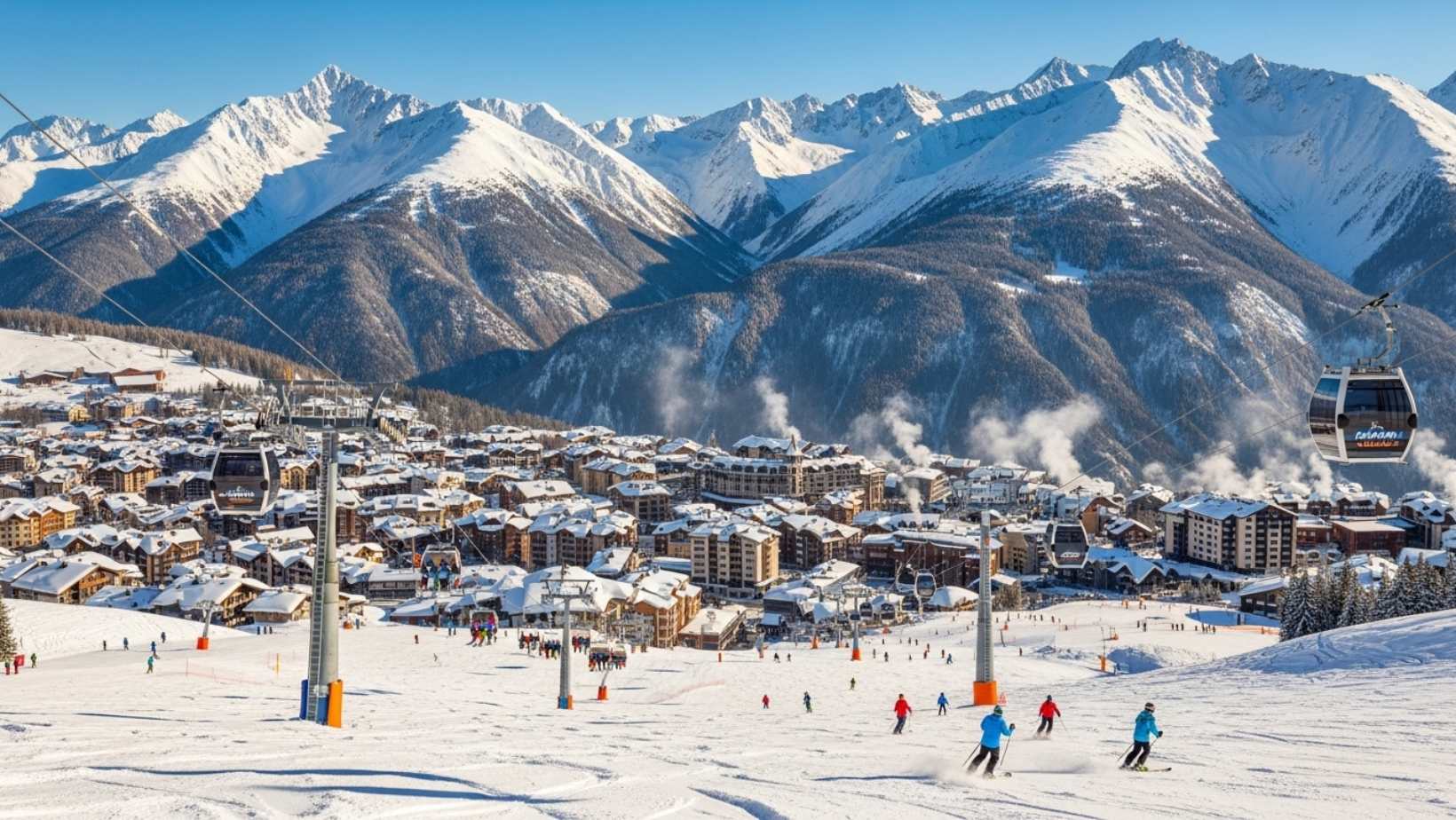Last winter, I paid €180 for a six-day ski pass in the Austrian Alps and immediately started calculating how many more runs I could afford if prices dropped by two-thirds. That mathematical daydream became reality when I discovered this Balkan mountain range where modern lifts service 75 kilometers of pristine slopes at prices that make Alpine resorts look like highway robbery. The bonus? Natural hot springs bubble up in nearby villages, creating the perfect après-ski therapy that no fancy spa can replicate.
This isn’t some obscure hill with a rope tow and delusions of grandeur. The infrastructure rivals anything you’ll find in France or Austria, with gondolas whisking skiers up to 2,560-meter peaks where the snow quality from December through March consistently surprises visitors expecting second-rate conditions. I’ve spent enough winters in Chamonix and St. Anton to recognize proper ski terrain, and these mountains deliver without the pretentious price tags.
The real revelation comes when you realize you’re skiing in a country where a hearty three-course meal costs less than a single beer at a Tyrolean lodge. Similar to other budget-friendly destinations, the savings here don’t mean compromising on quality—they mean experiencing authentic mountain culture instead of manufactured tourist villages.
You’ll find ski conditions that rival the Alps at one-third the price
The mountain lifts here operate with Swiss efficiency, which surprised me given the bargain pricing. A weekly ski pass runs around €120 compared to €350+ in Austria, yet the lift system includes modern eight-person gondolas and high-speed chairlifts that minimize queue times even during peak season. I’ve watched families from Sofia arrive with the same excitement Americans bring to Vail, except they’re paying Bulgarian prices instead of Colorado ones.
The 75 kilometers of marked runs cater to every skill level, from gentle nursery slopes where Bulgarian kids learn to carve their first turns to black diamond runs that challenge even cocky instructors from the Alps. What struck me most was the snow quality—the altitude and northern exposure create powder conditions that last well into March, long after lower-elevation resorts turn slushy. The locals know exactly when fresh snow will arrive, often predicting dumps days before the official forecasts catch up.
Equipment rental shops charge €15-20 daily for quality gear that would cost triple in Innsbruck. The ski schools employ instructors who learned their craft in Western Europe but returned home, bringing international teaching standards without the inflated hourly rates. I spent an afternoon with an instructor named Dimitar who’d worked five seasons in Verbier before deciding Bulgarian mountain life offered better quality of life despite lower wages.
You can soak in natural thermal springs after a day on the slopes
The real secret weapon lies in the villages surrounding the ski area, where geothermal springs have bubbled up for centuries. After six hours carving turns, I discovered outdoor pools fed by 37°C mineral water where steam rises into the crisp mountain air while you float beneath star-filled skies. These aren’t commercialized spa complexes—they’re authentic village facilities where locals have been taking the waters since Roman times.
The most magical winter experience involves visiting the UNESCO-listed monastery when fresh snow blankets its distinctive striped facades. The Byzantine frescoes inside glow with colors that seem impossibly vibrant against the white landscape outside. I arrived on a Tuesday morning in January when only three other visitors wandered the courtyard, creating a contemplative atmosphere that summer tour groups would destroy. The monks still maintain their daily routines, their chants echoing through halls that have witnessed 1,000 winters.
Unlike more famous alpine destinations, you can combine cultural exploration with serious skiing without fighting crowds or paying premium prices. The contrast between morning monastery visits and afternoon powder runs creates the kind of varied mountain experience that Western resorts package as luxury but here feels simply natural.
You’ll discover traditional mountain taverns serving food that actually warms your soul
The mehanas scattered throughout town serve the kind of stick-to-your-ribs winter food that makes Alpine cuisine look anemic by comparison. I’m talking about kavarma—a slow-cooked stew with pork, mushrooms, and wine that arrives in a clay pot still bubbling from the oven. One portion costs €6 and provides enough fuel for an entire afternoon of skiing, unlike those €18 Alpine “snacks” that leave you hungry an hour later.
The tavern culture here revolves around communal tables where locals and visitors naturally mix, sharing rakia (grape brandy) and stories from the slopes. During my third evening, I found myself drinking with a Sofia lawyer, a British ski instructor, and two Bulgarian mountain guides who insisted on teaching me drinking songs between shots. This spontaneous camaraderie happens because the town hasn’t yet developed the segregated tourist-versus-local dynamic that plagues Chamonix or Zermatt.
Traditional banitsa (cheese-filled pastry) appears at breakfast tables throughout town, baked fresh each morning in wood-fired ovens that have been heating the same corner bakeries for generations. The women who make these pastries learned the technique from their grandmothers, creating layers so thin you can read through them before they’re folded with sirene cheese. Like other authentic destinations, the food here connects you directly to centuries of mountain tradition rather than serving as mere tourist fuel.
The winter season from December through March offers consistent conditions without the Christmas and New Year price gouging that makes Alpine skiing prohibitively expensive. I’ve learned that February provides the sweet spot—deep snow, stable weather, and prices at their lowest before the March spring skiing rush begins.
